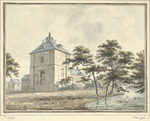Westbury, Shropshire

Westbury is a village and parish in Shropshire, England. It includes the settlements of Caus Forest, Lake, Marche, Newtown, Stoney Stretton, Vennington, Wallop, Westbury, Whitton, Winsley and Yockleton. It lies 8 miles (13 km) west of Shrewsbury, close to the Wales-England border. It is located at 135 m altitude. It had a population of 1,352 according to the 2011 census. In 2005, Westbury parish expanded with the annexation of half of the former Wollaston parish. It is situated on the B4386 road which travels from Shrewsbury to Montgomery. Amenities include a Marstons Pub called 'The Lion', a medical practice surgery, and a cemetery on Hinwood Road. The primary school (St Mary's CE Aided) closed in 2017, merging in a federation with Worthen and Hope into the Long Mountain School at Worthen.
Excerpt from the Wikipedia article Westbury, Shropshire (License: CC BY-SA 3.0, Authors, Images).Westbury, Shropshire
B4387,
Geographical coordinates (GPS) Address Nearby Places Show on map
Geographical coordinates (GPS)
| Latitude | Longitude |
|---|---|
| N 52.679 ° | E -2.953 ° |
Address
B4387
SY5 9WH
England, United Kingdom
Open on Google Maps









